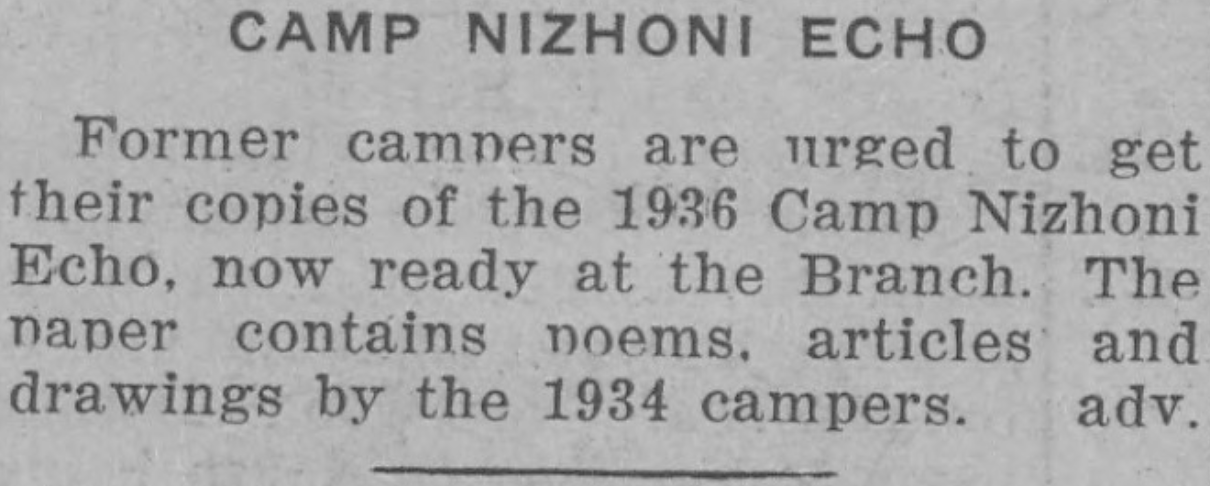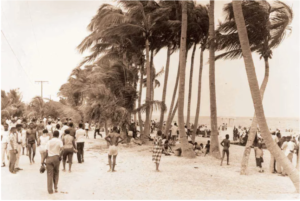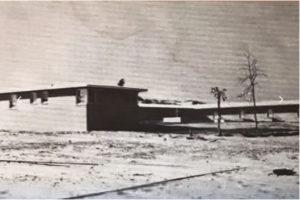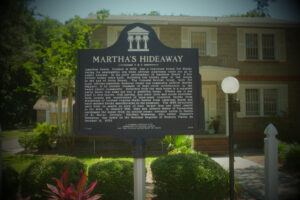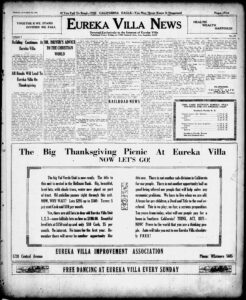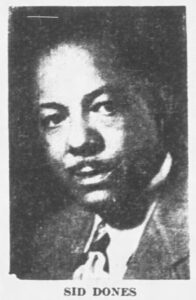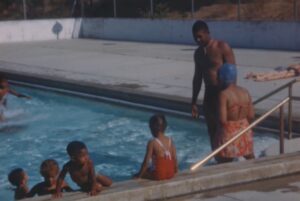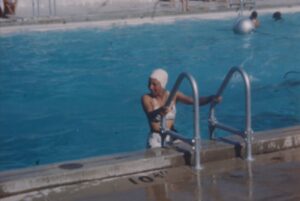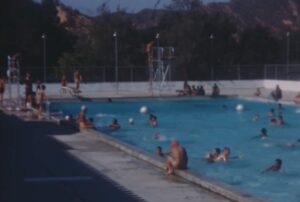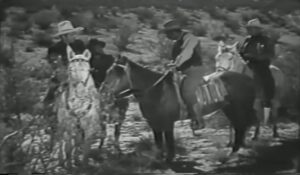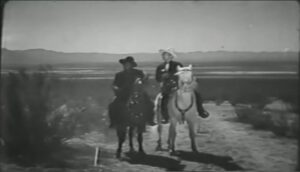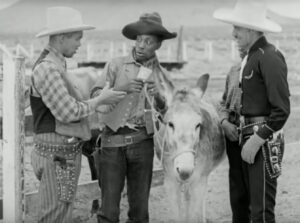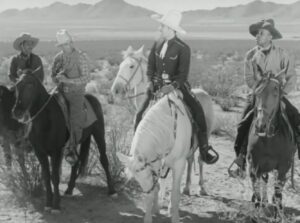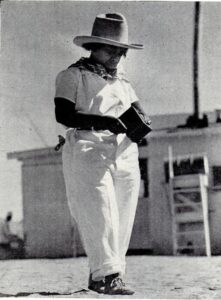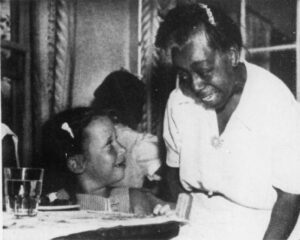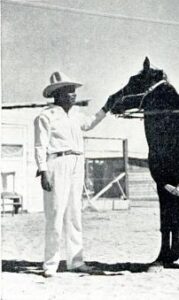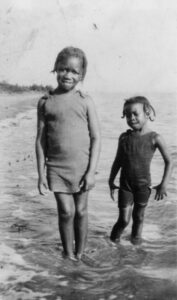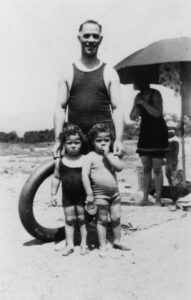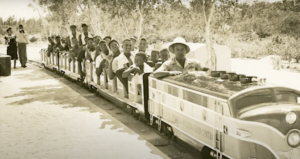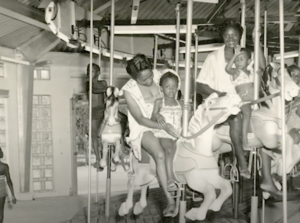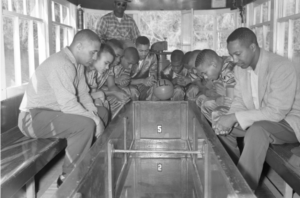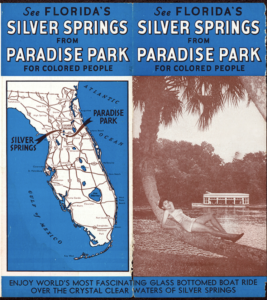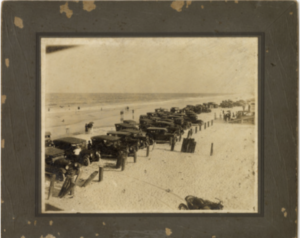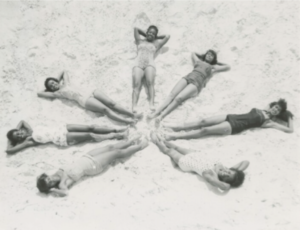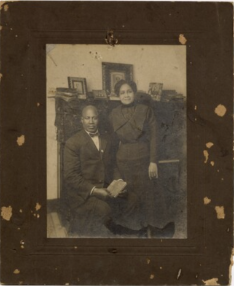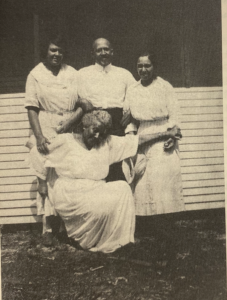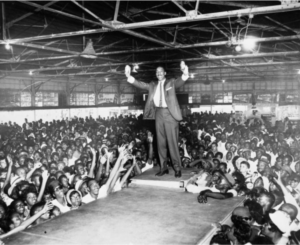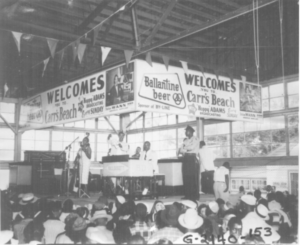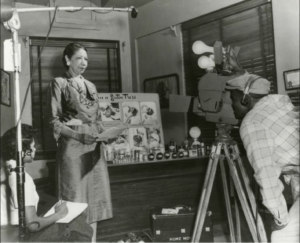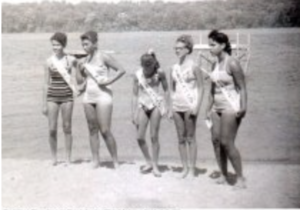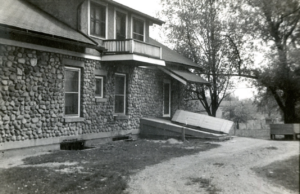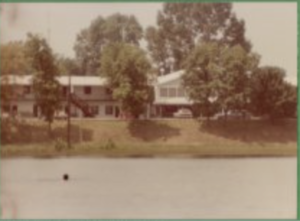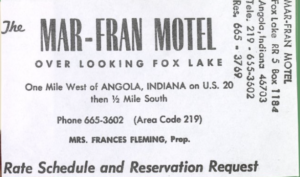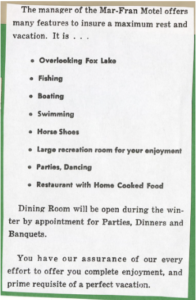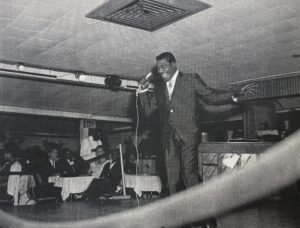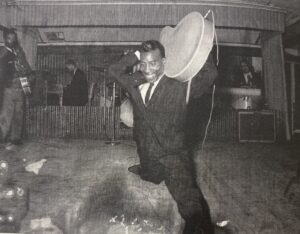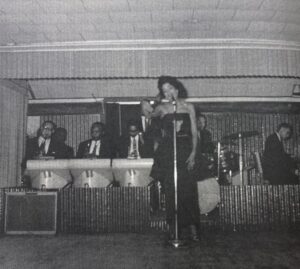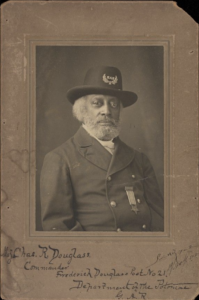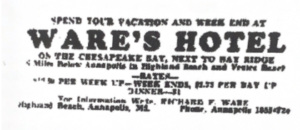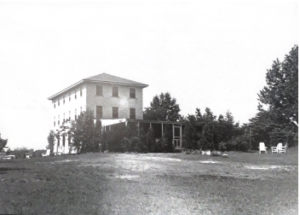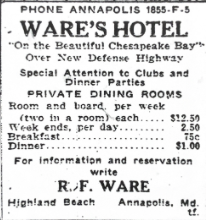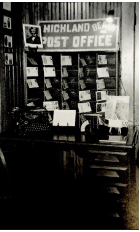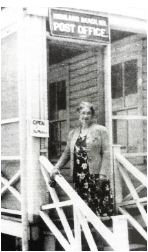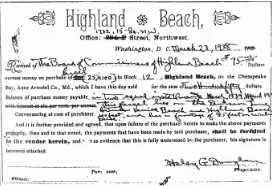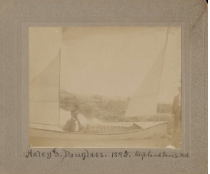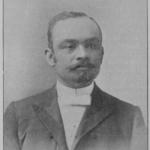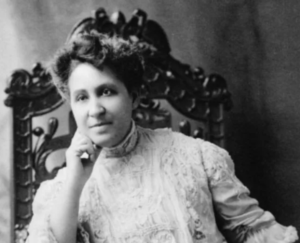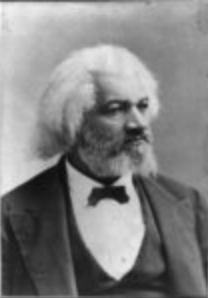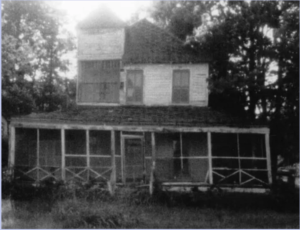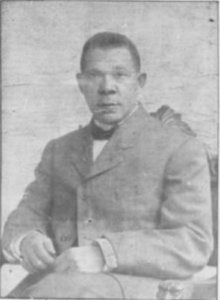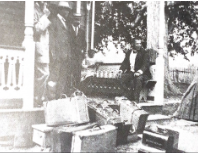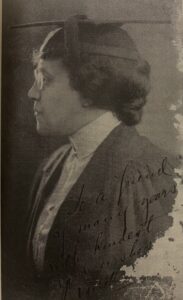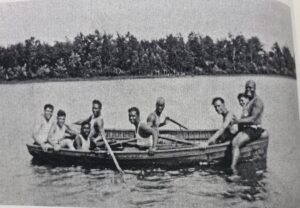
Lincoln Hills, Colorado
In its prime from the 1920s to the 1960s, Lincoln Hills was a peaceful all-Black mountain resort. It hosted families on summer vacations, couples on weekend getaways, and groups of children going to summer camps in coordination with the YWCA. In the 1920s, Black communities in and around Denver were subject to increasing racial tension due to the presence of the Ku Klux Klan. This influenced two businessmen in the area, Edwin C. Regnier and Robert Ewalt, to seek out land to develop into a resort for Black folks in need of a relaxing oasis. They got started in 1922 by forming the Lincoln Hills Development Company in the Five Points neighborhood of Denver. The two men bought land about 38 miles west of Denver and began dividing the area into plots. They made the plots small and easily affordable to build a cottage on, with a $5 down payment and $5 per month for plots that cost $50-$100. Anyone who purchased a plot had the ability to make a profit by renting out the cottage they built.
Lincoln Hills received remarkable reviews from patrons who sent letters to the company expressing their satisfaction: “I can recommend Lincoln Hills to any individual who seeks an ideal spot for his summer vacation, summer home, and even as a matter of worthwhile investment, for Lincoln Hills is growing.”5 Within a few years, Regnier and Ewalt’s arrangements saw the development of Lincoln Hills’ two biggest points of interest: Winks Panorama and Camp Nizhoni (Ni-SH-O-nee). In 1925, Obrey Wendall “Winks” Hamlet and his wife Naomi Hamlet began construction on Winks Panorama, or Winks Lodge. Completing the project by 1928, the couple had built a three-story, six-bedroom lodge which, along with their many other construction projects, including a tavern and a honeymoon lodge, drew in Black people from all over the country. Their patrons included many famous creatives like Duke Ellington, Count Basie, Lena Horne, Langston Hughes, and Zora Neale Hurston, who often could not find suitable accommodations within Denver, and would travel an extra hour after their performances and outings to stay at Winks Lodge. Following his first wife Naomi’s death, Winks continued operating the lodge with the help of his second wife, Melba, who was known to treat guests to her amazing barbeque recipe. The two offered their hospitality until Obrey’s death in 1965. Winks Lodge still carries the legacy of Lincoln Hills today and was added to the National Register of Historic Places in 1980.
In addition to Winks Lodge, Lincoln Hills was also home to Camp Nizhoni, a summer camp for young Black girls run by the Phyllis Wheatley Branch of the Y.W.C.A. In 1924, Regnier and Ewalt leased the YWCA a piece of land and a house in Lincoln Hills to host a summer camp there for three consecutive years and subsequently sold it to the branch for only $10. Young girls who arrived at Lincoln Hills for a week or two of camp were treated to meals made by the camp cook, Sister Ruby, long hikes to Echo Lake, water fights in South Boulder Creek, horseback riding, and more.9 Each year of camp, counselors guided the campers through different themed programming. One year, the campers learned about the history of mining in Lincoln Hills; the next year, programming “centered upon the heritage of the Negro people.”6 They also gave the campers the option to join different interest groups: the first aid group learned about treatment for various kinds of fractures, cuts, and bruises, the music group wrote an original musical play called “Back to Camp Next Year,” which incorporated historical American music styles, and the crafts group made leather coin purses, toothbrush holders, pot holders, etc.8 There was even a camp newspaper, the Camp Nizhoni Echo. As Camp Nizhoni grew in popularity, one summer campers from five different Colorado towns beyond Denver, as well as from eight other states, had the opportunity to experience summer camp at Lincoln Hills. It also received generous donations for upkeep and renovations, like a new roof and outdoor fireplace. Camp Nizhoni’s success lasted until 1945, when the YWCA became integrated.
Lincoln Hills gave Black folks in the Mountain West a unique opportunity to escape the tension and violence of the Jim Crow era and experience the beauties of nature with their families and friends. The environment was perfect for facilitating rest and recuperation in peace, and in addition to the joys of the outdoors, Lincoln Hills was an empowering project for Black folks— “A place where our race can show to the Nation a constructive piece of work.”4 Today, the history of Lincoln Hills has inspired the mission of the Lincoln Hills Cares Foundation to diversify outdoor experiences for generations to come. The foundation hosts many outdoor programs, including the Nizhoni Equestrian Program.
1 Mary Elizabeth Wood. “Camp Nizhoni YWCA Mountain Playground at Lincoln Hills Miss Elizabeth Wood Girls’ Reserve Executive In Charge.” The Denver Star, June 27, 1936. https://www.coloradohistoricnewspapers.org/?a=d&d=DSR19360627-01.2.7&e=–1921—1980–en-20-DSR-1–img-txIN%7ctxCO%7ctxTA-%22lincoln+hills%22——-2——.
2 “Five Points.” Colorado Encyclopedia. Accessed December 12, 2023. https://coloradoencyclopedia.org/article/five-points.
3 Lincoln Hills, Inc. Lincoln Hills warranty deed. Photograph. Denver. Denver Public Library. Accessed December 12, 2023. https://digital.denverlibrary.org/digital/collection/p15330coll22/id/94532/rec/52.
4 Prince, G.L. Letter to Lincoln Hills, Inc. Letter from G.L. Prince to the Lincoln Hills Company, March 17, 1926. https://digital.denverlibrary.org/digital/collection/p15330coll22/id/94306/rec/37.
5 Wayman Ward, A. Letter to Lincoln Hills Company. Letter from A. Wayman Ward to the Lincoln Hills Company, March 1, 1928. https://digital.denverlibrary.org/digital/collection/p15330coll22/id/94301/rec/32.
6 Y.W.C.A. “A Membership Call.” The Denver Star, October 2, 1937. https://www.coloradohistoricnewspapers.org/?a=d&d=DSR19371002-01.1.1&e=–1921—1980–en-20-DSR-141–img-txIN%7ctxCO%7ctxTA-%22lincoln+hills%22——-2——.
7Y.W.C.A. “Camp Nizhoni Echo.” The Denver Star, November 10, 1934. https://www.coloradohistoricnewspapers.org/?a=d&d=DSR19341110-01.2.36&srpos=1&e=–1921—1980–en-20-DSR-1–img-txIN%7ctxCO%7ctxTA-%22camp+nizhoni+echo%22——-2——.
8 Y.W.C.A. “Lincoln Hills.” The Denver Star, August 20, 1938. https://www.coloradohistoricnewspapers.org/?a=d&d=DSR19380820-01.2.21&srpos=47&e=–1921—1980–en-20-DSR-41–img-txIN%7ctxCO%7ctxTA-%22lincoln+hills%22——-2——.
9 Y.W.C.A. “Phyllis Wheatley Branch Y.W.C.A. Notes.” The Denver Star, July 30, 1938. https://www.coloradohistoricnewspapers.org/?a=d&d=DSR19380730-01.2.32&srpos=2&e=–1921—1980–en-20-DSR-1–img-txIN%7ctxCO%7ctxTA-%22lincoln+hills%22——-2——.
Convery, William J. “Colorado Stories: Interpreting History for Public Audiences at the History Colorado Center.” Dissertation, UNM Department of History, 2012. https://digitalrepository.unm.edu/hist_etds/15/.
Corbet, Kathleen, Sean Doyle, Daniel Shosky, and Thomas Witt. “Documentation of Historic Properties along the Gilpin Tunnel Rail Corridor, Gilpin County, Colorado,” August 31, 2009. https://lincolnhillscares.org/wp-content/uploads/2023/01/Gilpin-Tunnel-Rail-Corridor_Final-Report_SWCA-2.pdf.
“Historic Lincoln Hills.” Lincoln Hills Cares, August 7, 2023. https://lincolnhillscares.org/about-us/historic-lincoln-hills/.
Josh. “Lincoln Hills Country Club.” Denver Public Library Genealogy, African American & Western History Resources, September 20, 2017. https://history.denverlibrary.org/news/lincoln-hills-country-club.
“Ku Klux Klan in Colorado.” Colorado Encyclopedia. Accessed December 12, 2023. https://coloradoencyclopedia.org/article/ku-klux-klan-colorado.
“Lincoln Hills – Wink’s Lodge.” Museums for Digital Learning. Accessed December 12, 2023. https://museumsfordigitallearning.org/resourcekit/71/slideshow/454.
“Lincoln Hills.” Colorado Encyclopedia. Accessed December 12, 2023. https://coloradoencyclopedia.org/article/lincoln-hills.
“Miss Wood Active in Newark, New Jersey.” The Denver Star, March 12, 1938. https://www.coloradohistoricnewspapers.org/?a=d&d=DSR19380312-01.2.50&srpos=50&e=–1921—1980–en-20-DSR-41–img-txIN%7ctxCO%7ctxTA-%22lincoln+hills%22——-2——.
PBS. Colorado Experience: Lincoln Hills. PBS, 2013. https://www.pbs.org/video/colorado-experience-lincoln-hills/.
Y.W.C.A. “Y.W.C.A. Notes.” The Denver Star, July 18, 1936. https://www.coloradohistoricnewspapers.org/?a=d&d=DSR19360718-01.2.27&srpos=73&e=–1921—1980–en-20-DSR-61–img-txIN%7ctxCO%7ctxTA-%22lincoln+hills%22——-2——.
List of Images
- Cover Photo: Black and white photo of four Y.W.C.A. buildings in a clearing. Denver Public Library Special Collections, [ARL39-2021-288] https://digital.denverlibrary.org/digital/collection/p15330coll22/id/94557/rec/2.
- Map thumbnail – Denver and Rio Grande Western Railroad Lincoln Hills Platform: Black and white photo of a group of children standing on a dirt platform to the right of train tracks. Denver Public Library Special Collections, [ARL-112] https://digital.denverlibrary.org/digital/collection/p15330coll22/id/67870/rec/192.
- Map Thumbnail – The Zephyr View: Black and white photo of Pitts cabin, as it was called before it was renamed The Zephyr View when John H. Scott took ownership, situated on a hillside with trees all around. Denver Public Library Special Collections, [ARL39-2021-281] https://digital.denverlibrary.org/digital/collection/p15330coll22/id/94540/rec/1.
- Map Thumbnail – Shangri-La Cabin: Black and white photo of two people and a car in front of a wooden cabin with a sign that reads “Shangri-La.” Denver Public Library Special Collections, [ARL39-2021-321]. https://digital.denverlibrary.org/digital/collection/p15330coll22/id/94554/rec/17.
- Map Thumbnail – South Boulder Creek: Black and white photo of 6 young girls sitting and swimming in a creek with trees behind them. Denver Public Library Special Collections, [ARL-118]. https://digital.denverlibrary.org/digital/collection/p15330coll22/id/67878/rec/2.
- Map Thumbnail – Winks Tavern: Black and white photo of a building with a front porch and stairs leading to the entrance. Denver Public Library Special Collections. https://digital.denverlibrary.org/digital/collection/p15330coll26/id/27/rec/2.
- Map Thumbnail – The Orange Cabin: Black and white photo of a letter written by Obrey Wendall “Winks” Hamlet addressed to Lincoln Hills, Inc. Denver Public Library Special Collections, [ARL39-2021-275]. https://digital.denverlibrary.org/digital/collection/p15330coll22/id/94305/rec/1.
- Map Thumbnail – Winks Panorama: Black and white photo of a three-story cabin with a stone chimney and trees growing all around it and a sign above the door that reads “Winks Panorama.” Denver Public Library Special Collections. https://digital.denverlibrary.org/digital/collection/p15330coll26/id/0/rec/17.

“It is here that uniqueness of rustic living and the beauty of God’s out-of-doors combine harmoniously and make a perfect setting for lovers of camp life.”1
–Mary Elizabeth Wood

“Nestled within the granduer of the everlasting hills, bathed in perpetual sunshine and fragrant with the odors of wild flowers and the health giving pine forests, we are building a place that will attract thousands of people and at the same time show our genius and constructive ability.”3
–Lincoln Hills, Inc.






